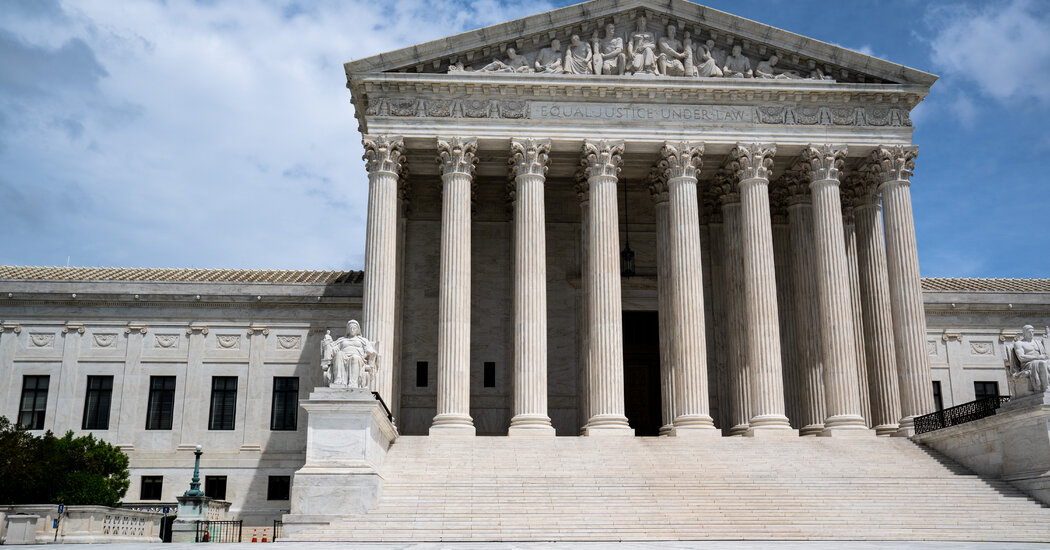WASHINGTON — The Supreme Court considered on Wednesday whether Google should have to pay Oracle billions of dollars in a long-running lawsuit over software used on many of the world’s smartphones, wrestling during a lively argument with the potentially enormous implications of what has been called the copyright case of the decade.
Several justices noted how consequential a decision in the case could be. “I’m concerned,” Justice Samuel A. Alito Jr. told a lawyer for Google, “that, under your argument, all computer code is at risk of losing protection.”
Chief Justice John G. Roberts Jr. noted the opposite concern. “We’re told that if we agree with Oracle, we will ruin our tech industry in the United States,” he said.
The justices heard the argument by telephone, and they used a series of low-tech analogies to test the two sides’ arguments. Their questions included ones on safecracking, football playbooks, typewriter keyboards, restaurant menus and telephone switchboards.
The case, Google v. Oracle America, No. 18-956, concerns Google’s reliance on aspects of Java, a programming language, in its Android operating system. Oracle, which acquired Java in 2010 when it bought Sun Microsystems, said that using parts of it without permission amounted to copyright infringement.
Oracle has asked for billions of dollars in damages over what it said was Google’s wrongful copying of about 11,000 lines of software code.
In 2016, a San Francisco jury found that Google had not violated copyright laws because it had made “fair use” of the code. But in 2018, a specialized appeals court in Washington, the United States Court of Appeals for the Federal Circuit, disagreed with that assessment.
At the argument on Wednesday, Thomas C. Goldstein, a lawyer for Google, stressed that the case concerned copyright law, which protects expression, rather than patent law, which protects inventions. The lines of code that are merely software interfaces, allowing developers to build compatible computer programs, cannot be copyrighted, he said.
“There is no copyright protection,” he said, “for computer code that is the only way to perform those functions.”
Chief Justice Roberts responded that “cracking the safe may be the only way to get the money that you want, but that doesn’t mean you can do it.”
Mr. Goldstein said the example illustrated the distinction he was trying to draw. “If you get a patent on the safe, you may well be able to keep us out,” he said. “But if you write a book about the safe, that is about how to crack safes, that doesn’t give you the exclusive right to do it.”
Chief Justice Roberts used a different analogy in questioning E. Joshua Rosenkranz, a lawyer for Oracle. Could a restaurant, the chief justice asked, copyright the structure of a menu that separated appetizers, entrees and desserts?
Mr. Rosenkranz responded that “if it’s a standard way of doing things, it is not protected.” The Java code, he added, was entirely different.
“It’s not a menu just saying here are apps and here are dinner plates, with standard descriptions that everyone uses of those apps and dinner plates,” Mr. Rosenkranz said. “We fill the blanks in 30,000 times over,” he said of the Java code, “and each item had its own description that no one else was using.”
Justice Sonia Sotomayor indicated that Google might have transformed the code, a factor in the fair use analysis.
“Could you tell me why you think that Google’s work was not transformative?” she asked Malcolm L. Stewart, a lawyer for the federal government who argued in support of Oracle. “It moved Java’s platform from a PC, essentially, to mobile phones. Why wasn’t that a transformative step?”
Mr. Stewart responded that using copyrighted material for a new purpose was not by itself transformative.
“Imagine a motion picture that has only been released in theaters, and somebody gets the print and offers to livestream it over the internet,” he said. “It’s the same content simply being used on a different platform. No one would think of that as transformative.”
But on balance, Mr. Goldstein, Google’s lawyer, faced more hostile questions than did his adversaries in the case.
“What gives you the right to use their original work?” Justice Sotomayor asked.
Justice Neil M. Gorsuch said Google had options other than using the Java code. “Others have managed to innovate their way around it,” he said. Apple and Microsoft, he said, have “been able to come up with phones that work just fine without engaging in this kind of copying.”
Justice Brett M. Kavanaugh also appeared to have doubts. “You’re not allowed to copy a song,” he said, “just because it’s the only way to express that song.”
[ad_2]
Source link


